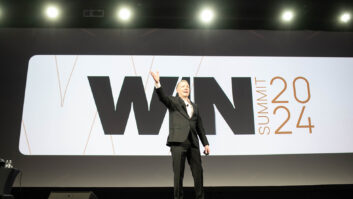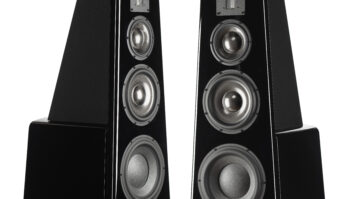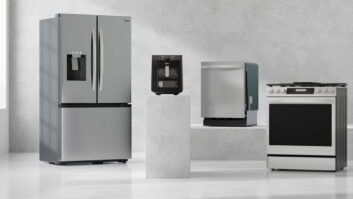LAS VEGAS — Demonstrating its commitment to independent dealers while forging new discount distribution channels, GE Appliances sent its general manager of merchandising, Dave Goodrich, to the Associated Volume Buyers convention here earlier this month to address its members. The topic of discussion: Challenges and opportunities facing independent dealers.
Goodrich began his presentation with an overview of the majap marketplace, which has entered “a tremendous period of change” with “significant changes in distribution.”
Presently, Sears still claims the lion’s share of the white-goods business, with a 38 percent outlet share (defined as a retailer’s share of shoppers multiplied by its closure rate). According to GE data, Lowe’s now owns the No. 2 spot with a 7 percent outlet share, followed by Circuit City with 6 percent, Best Buy with 5 percent, and The Home Depot and Wards at 2 percent each — while independents and all others represent a combined 40 percent share.
When gauged by closure rate alone, however, the retail landscape looks somewhat different. Sears remains on top with a closure rate of 63 percent, although independent dealers follow closely at 57 percent. Trailing are Lowe’s at 52 percent, Circuit City at 40 percent, The Home Depot at 35 percent and Best Buy at 33 percent.
According to Goodrich, anything less than a 50 percent closure rate is indicative of a money-losing operation and is impacting the bottom line. This, he suggested, explains Circuit City’s departure from appliances, which leaves some
1.5 million units and approximately $848 million in retail sales up for grabs.
Despite the independents’ solid closure rate, Goodrich warned that their rate of increase in foot traffic is declining. “You have a tremendous closure rate,” he told AVB’s dealers. “If you can get them in the store, you can close. The answer is getting them in the store.”
What exactly drives market share? Goodrich said GE has studied the phenomenon, after having observed Circuit City grab 10-12 percent of market share as it entered new territories, often from businesses that had thrived there for decades.
According to consumer surveys, shoppers rank product selection as a store’s most important attribute, which includes size of display and brand availability. Interestingly, getting the best price is only their second-highest consideration, while convenience, including location and hours, ranks third.
The fourth most important criterion to consumers is service and the knowledge that a retailer will stand behind its products. This, observed Goodrich, “is where Sears lives, since it doesn’t offer the lowest price.”
To turn that consumer information into a plan of action for independents, Goodrich outlined the following four-point plan:
Increase traffic: The most effective and cost-efficient way to do that is through newspaper advertising, Goodrich stressed. “Newspaper ads, whether ROP [run of press] or inserts, tell a better brand story, let consumers know where to take their purchase if it’s broken and communicate price.” To underscore his point, he noted that Sears actually lost market share six years ago when it moved away from newspaper advertising in favor of television, and regained its market position when it returned to the print medium.
Use the Brand Source common identity: Local merchants, he said, can “look like one big retailer” by pooling their advertising dollars within one market.
Embrace the Internet: If not for sales, necessarily, then as a research tool for consumers that will engender store loyalty. “Most consumers will want to see a big-ticket durable before they buy it, but they’ll use the Internet to research the purchase,” Goodrich said. Besides, he added, the Internet is an area where AVB is “far ahead of the other groups.”
Expand display area: This communicates a wide selection. “Anything you can do to expand your display square footage is a big, big deal,” Goodrich said, noting that Sears only stemmed its market share losses of the late 1970s through the ’80s when it introduced national brands with its Brand Central campaign.
In summary, Goodrich reminded the audience that they could expect to see more retailers exit the appliance business and more non-majap merchants come in. The independents’ advantage, he said, is that “consumers trust you, not the mass guys. A tremendous number of consumers are interested in service, they want to talk to a knowledgeable salesman.
“Your only weakness is getting consumers into the store.”













